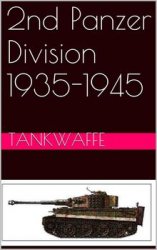Founded in January 1945 as Woodley Airlines, scheduled successor to preceding Woodley Airways, Arthur G. Woodley’s pioneer Alaskan carrier is renamed Pacific Northern Airways on August 23. Operations continue with 2 ex-USAAF C-73s (military Boeing 247Ds) obtained on June 20. During the first quarter of 1946, four new Douglas DC-3s are acquired, followed by as fifth from the Reconstruction Finance Corporation in May.
On June 20, the company, already certified for certain routes back in 1938, receives a CAB award of a route from Anchorage to Juneau, with intermediate stops. Two ex-military Douglas A-26B Invader bombers are received in October and will be employed for route survey work.
On August 1, 1947, Pacific Northern Airways is renamed Pacific Northern Airlines. Two more DC-3s are obtained in 1948-1949; the first is resold to All-American Aviation on May 19 of the former year, while the latter is used for spare parts. Pacific Northern becomes a trunk line at the dawn of the 1950s and adopts the subtitle “The Alaska Flag Line.”
On September 29, 1950, the CAB grants it a route between Anchorage and Seattle. On May 24, 1951, this award is supplemented by authority to fly between Portland and Seattle and Fairbanks. The latter service is launched on October 21 with a DC-4 purchased from the Mexican airline Aerovias Guest, S. A. de C. V. in July.
In 1953, having acquired three more DC-4s during the spring, the company also adds a Juneau-Seattle route to its system and transfers the small towns of its network around Alaska’s Bristol Bay to new entrant Bristol Bay Airlines. A DC-3 is sold to Western Airlines in December.
After selling additional shares and obtaining a $1-million loan, Pacific Northern leases three Lockheed L-749A Constellations from Delta Air Lines in March and April 1955. A stop at Ketchikan and Annette Island is opened in August. The leased Lockheeds are purchased from Delta on March 2, 1956 and on May 6 a fourth is acquired from British Overseas Airways Corporation (BOAC).
A second British L-749A is arranged for on November 30, 1958. Direct Kodiak to Seattle Constellation flights commence on May 1, 1959 and during the year, Chairman Woodley’s firm boards its one-millionth (cumulative) passenger.
An L-749A with five crew and nine passengers disappears during its June 14, 1960 Seattle-Anchorage service; the wreckage is sighted on Mount Gilbert, Alaska, the next day and there are no survivors.
A sixth L-749 is leased from Trans World Airlines (TWA) on August 17. In early December, the carrier reports its November bookings were 42% higher than for the same period a year earlier.
An $11-million loan is floated by CEO Woodley in 1961 — equal to a year’s gross revenues — and employed to order two Boeing 720-062s (B-720As) that join the fleet in late March and early April 1962. These allow PNA to enter the jet era on April 27 when they begin flying the Seattle-Ketchikan and Anchorage run.
In 1963, the company transfers its Anchorage-Naknek via Iliamna route to Northern Consolidated Airlines. Additionally, the Constellation leased from Trans World Airlines (TWA) in 1960 is purchased on October 1, the same day a DC-3 is withdrawn. Two old Douglas transports are sold during the year and a third goes to Air Ivorie, S. A. on June 15, 1964. During the latter year, airline employment stands at 627 and the fleet includes 9 aircraft. Enplanements are 184,000, 16.5% higher than the 158,000 boarded a year earlier.
The workforce in 1965 is 800 and the fleet includes 9 aircraft: 2 B-720As, 1 DC-3, and 6 L-749s. As the result of a CAB route realignment between larger carriers, Pacific Northern looses its prime Seattle-Anchorage monopoly when it begins sharing the route with Northwest Airlines on March 29. The coastal run from Washington to Alaska via Ketchikan, Juneau, Yakutat, and Cordova, is also maintained. The CAB does, however, withdraw the carrier’s authority to serve Portland, although a monopoly on the Ketchikan-Juneau segment is allowed.
At the end of the year, the government’s regulators offer a lump sum payment of the previous three years’ subsidies, coupled with a total cessation of such payments in the future.
In addition, the company originates 232,913 passengers during the year and records its best financial year, with total revenues of $30 million and a net profit of $2 million.
An L-749A is destroyed in a bad landing at Kenai, Alaska, on June 6, 1966; there are no fatalities.
On June 20, a B-720-048, originally operated by Aer Lingus Irish Airlines, Ltd., is purchased from Braniff International Airways; 10
Days later, a seventh and final L-749A is acquired from Trans World Airlines (TWA). The airline is caught up in the “merger fever” sweeping the Alaskan airline industry in the middle part of the decade. Having lost several of his best routes and destinations, Arthur Woodley agrees to a merger with Western Airlines on October 31.
The company’s integration into the larger airline (a two-for-one stock transaction) is completed on October 1, 1967, at which time the PNA identity disappears.




 World History
World History









